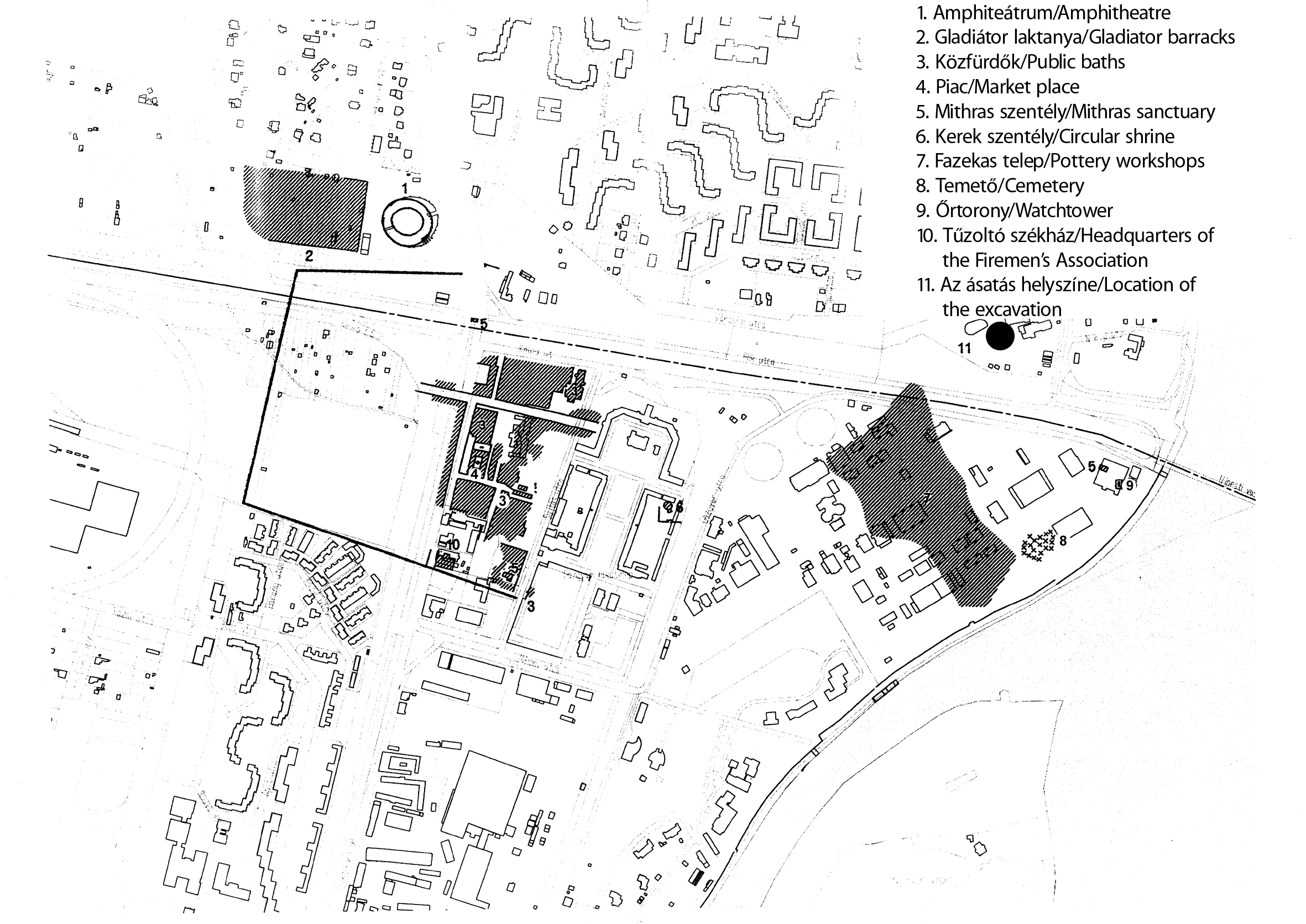The archaeological research of Aquincum's civil town and its immediate surroundings has been ongoing for over a century, uncovering thousands of graves from various periods of the Roman era. In 2003, previously known cemetery sections were complemented by a grave parcel excavated northeast of the civil town (Budapest, 3rd district, enclosed by Pók street, Városfal street, and Nánási road).
Geologists assisted us in reconstructing the ancient environment of the cemetery. In antiquity, the area was a swampy region with sand dunes in places, which was likely flooded several times by the nearby Danube. One of these park-like elevations, overgrown with bushes and trees, was used for burials by a group of Aquincum's civil town residents during the 2nd to 4th centuries AD. During the excavation, we uncovered and documented a total of 40 graves. Due to repeated flooding, many of them were in very poor condition. The cemetery was likely bordered by the floodplain of the Danube to the east, and to the north, a wide ditch, filled with late Roman weapon fragments and coins (4th-5th centuries AD), may have marked the boundary, indicating later use. We did not reach the possible edges of the cemetery section from the west and south during the excavation.

Most of the graves contained skeleton burials, with only two cremation graves found. From the outset of the excavation, the graves' simple construction and the scarcity of grave goods were notable. In all cases, the deceased were placed in wooden coffins, and grave goods were deposited in less than 30% of the burials. These were mostly items of clothing, or pottery containing food and drink offerings, such as jugs, cups, or simple plates.
One such example is Grave 8, which contained the skeleton of a young man aged 24-32. Beside the deceased, we found a bronze spatula with remnants of what may have been a small wooden box and items from his former attire: an iron belt buckle with textile imprints, iron shoe nails, and a bullae (amulet) worn around his neck. This small bronze capsule, according to Roman beliefs, was used to store objects like seeds to ward off evil. Grave 10 also contained a young man, with two terra sigillata vessels, a plate, and a cup placed by his relatives in the grave.

Grave 19 held the remains of a woman who died young (around 30 years old). Items recovered from her grave included a small pot, a cup, a lamp, and personal items such as a necklace made of blue and green glass paste beads covered in gold leaf, a wooden hairpin, and her favorite bone dice.
These three graves, with relatively "richer" grave goods, did not offset the generally poor nature of the grave group, as confirmed by the preliminary physical anthropological examination of the bones, which revealed a high incidence of pathological and other abnormalities. These findings raise intriguing possibilities about the social status of those buried here and, therefore, the role of this cemetery section. It is conceivable that this cemetery, located in a remote area but used for a long period during Roman rule, was intended for individuals of lower social status (such as hard-working slaves, freedmen?), or for those who were socially disadvantaged for some reason (e.g., people with dwarfism). The cemetery's peripheral location can also be interpreted if the plot belonged to the northern edge of the so-called eastern cemetery of the civil town.
We hope that further data for examining the buried individuals from a socio-sociological perspective will be provided by the anthropological and archaeogenetic studies now underway. These studies may shed light on important information, such as the origins, kinship relations, or various diseases of the deceased.
Orsolya Láng
